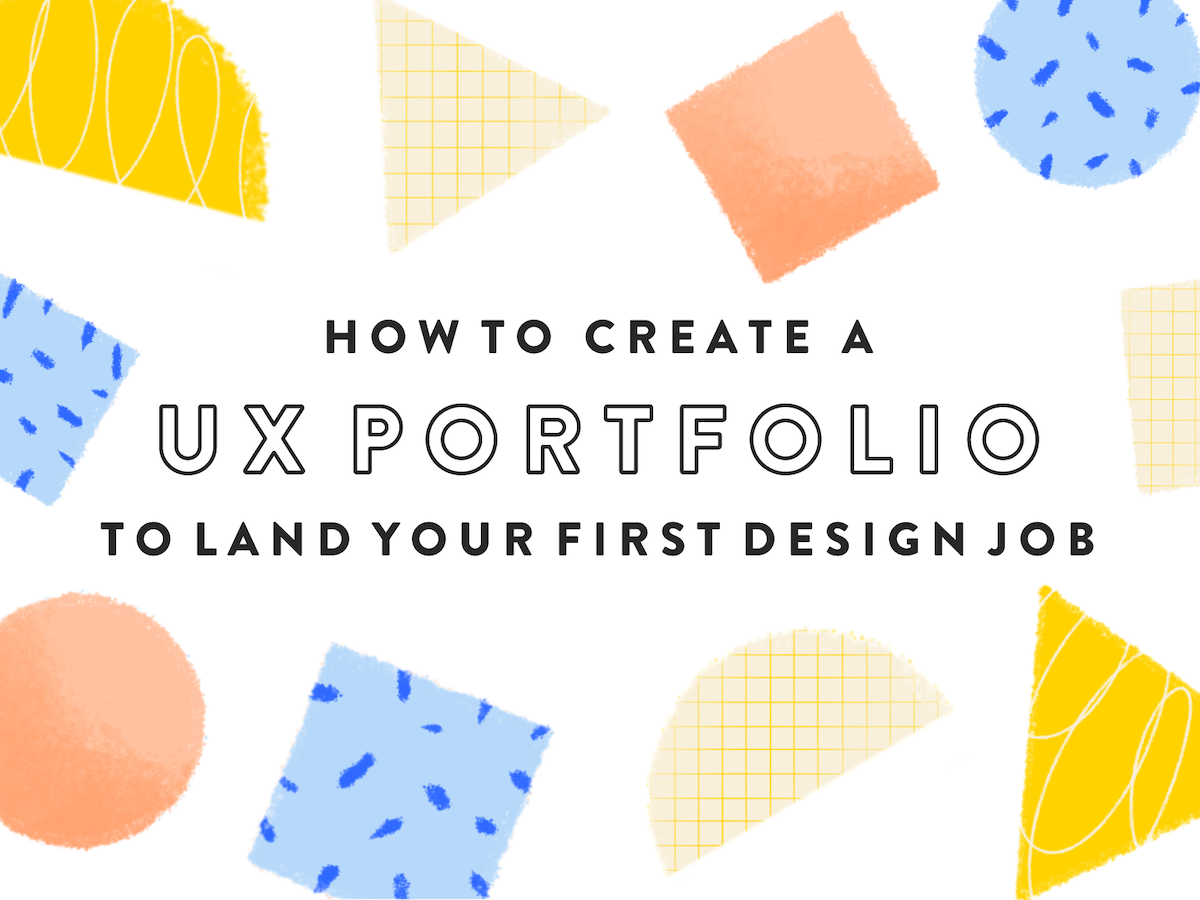How To Create A UX Portfolio To Land Your First Design Job

Trying to land your first job anywhere can be tough. Getting work requires work and there’s no shortcut to representing yourself in the best light.
“The portfolio is not just about showing your work, it’s also about how you present that work.”
Landing your first job as a UX designer requires that you treat it like a job. For most UX design jobs you apply to, a great portfolio will be a requirement and an integral part of the job interview process.
The portfolio is not just about showing your work, it’s also about how you present that work—the actual UX of your UX portfolio. As you create your first UX portfolio to get your first design job, there are three key things to consider.

1. Does your portfolio represent your personality and passion?
If you are just starting out, you likely won’t have a lot of real-world experience to show. This is where you come in. In lieu of experience, people are hiring YOU. Tell your story about why you decided to get into this field.
For most of us, it’s a winding road of discovery. Share that journey and what specifically makes you excited about the field. Establishing that personal connection is what could help set you apart from other candidates.
“Establishing that personal connection is what could help set you apart from other candidates.”
Given that most resumes follow a very similar format, it’s not realistic to assume your personality will shine through in your resume. Use your UX designer portfolio to showcase you. In a time when hiring managers hire as much for skill as for culture fit, be proactive and let them get to know you.
Something to think about: When people buy houses and it’s down to multiple offers, writing a personal letter of connection will oftentimes help a potential buyer’s offer stand out from others. The same thing applies to your career. Show your personality, share your story, and allow your passions to shine into the final product.

2. Does your UX design portfolio showcase your past experience?
If UX is not your first career, then the question comes up, “How much should I try to showcase the experience from my previous career?” The answer is, it depends!
Many fields provide you with experience and skills that relate to user experience such as journalism, psychology, product management, graphic design, theatre, and industrial design. But should you include the logos you designed three years ago? What about that video animation you created? Or the car interface you designed when you were an industrial designer at Ford?
If you show too much of your past experience it could distract from the UX projects in your portfolio.
A good strategy is to separate your UX experience from other design process projects and case studies. But again, it depends. If you were a psychologist and you planned and executed a research project, then that might be a project in your portfolio, framed to showcase your research skills. For your past experience, consider emphasizing this on your About page of your website or in a section of your PDF portfolio.
3. Do you accurately frame your UX bootcamp or course work?
If you attended a UX bootcamp or education program of any type, chances are you have some projects that you could include. The question is, “Should I include UX bootcamp work in my UX portfolio?” Of course you can—however, it’s all about how you frame that experience.
Above all, real-world work should always take precedence over bootcamp and education projects. Why? Because your school and course projects happened in a vacuum and did not have the real-world constraints, timelines, stakeholders, and feedback cycles that you encounter in real world situations.
Now, if you do include work from your UX bootcamp or education program, here are some things to consider:
- Be 100% honest about what you did. If you include the final visual design, and you are not a visual designer, then make sure you indicate that in the portfolio. Be a decent human being and don’t pass off other people’s work as your own.
- Don’t feel the need to include everything you did. If you did an ideal to launch UX process, and you are trying to get a role as a User Researcher, then do you really need to show the visual design phase? No, you don’t. Instead of having a project called “Mobile App Idea To Prototype” in your portfolio, focus on the research and call it “User Research For Mobile App”.
- Think beyond what you were assigned. To set yourself apart from other students, consider what you could add to the scope of the project. Could you propose further user research to understand if your prototype made sense to users? Could you propose a product feature roadmap to show what you would do if you worked on this for another three months? Also, be reflective and include sections such as “Lessons Learned” which can contain hindsights now that you are done with the project.
Start building your UX design portfolio today
To create a user experience portfolio and get your first design job, you must treat it like a job. You have to think through the purpose of your portfolio, your users (recruiters and hiring managers), and the content of your portfolio. Of course, aesthetics matter, but do not jump straight into what it looks like.
If you invest the time in the beginning to think through the strategy and content of your portfolio, the design phase will go ten times faster and you’ll end up with a portfolio that has a powerful message and not just a pretty look to it.